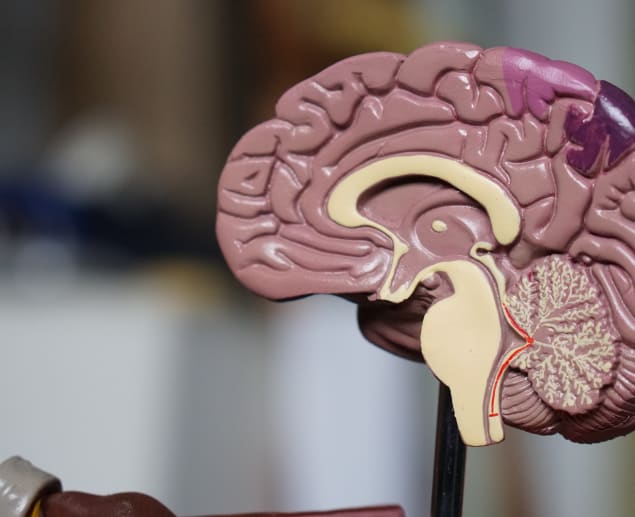MRI for Epilepsy: The Essential Guide to Diagnosing and Understanding Seizure Disorders
Introduction to MRI for epilepsy
Magnetic Resonance Imaging (MRI) is a non-invasive imaging technique that has become increasingly popular in the diagnosis of epilepsy. By using powerful magnets, radio waves, and magnetic fields, MRI scans create detailed images of a person's brain, allowing doctors to identify structural abnormalities or lesions that could be causing seizures. In this blog post, we will explore how MRI is used to diagnose epilepsy, its advantages over other imaging techniques, and the various MRI techniques employed in clinical practice.
The role of MRI in diagnosing epilepsy
Epilepsy is a neurological disorder characterized by recurrent, unprovoked seizures. Seizures occur due to abnormal electrical activity in the brain, and diagnosing epilepsy often involves a combination of medical history, neurological examination, and imaging tests. While EEG data can provide information about the electrical activity of the brain, it cannot detect structural abnormalities or underlying causes of seizures. This is where MRI scans come into play.
Identifying epileptogenic lesions
An epileptogenic lesion is a structural abnormality in the brain that is responsible for causing seizures. These lesions can be caused by various factors, including:
-
brain tumours
-
scar tissue
-
vascular malformations (an abnormality or irregularity in an artery, vein, or lymph vessel)
-
cortical development abnormalities (caused by disturbances to how the cerebral cortex, also known as grey matter, develops).
By identifying and localizing epileptogenic lesions, MRI scans play a crucial role in determining the most appropriate treatment plan for individuals with seizure disorders.
MRI vs. CT scans for epilepsy diagnosis
While both MRI and CT scans can be used to diagnose epilepsy, MRI offers several advantages over CT scans in terms of superior sensitivity and ability to detect subtle structural abnormalities. Additionally, MRI does not expose the patient to ionizing radiation, making it a safer option, especially for children and pregnant women.
How does MRI work?
MRI uses a combination of magnetic fields, radio waves, and hydrogen atoms in the human body to create detailed images of internal organs and tissues. When placed inside the MRI scanner, the magnetic field causes hydrogen atoms to align with the field. Radio waves are then sent into the body, which disrupts this alignment. As the hydrogen atoms return to their original alignment, they emit signals that are detected by the MRI machine and used to create images of the brain.
Functional MRI (fMRI) and seizure activity
Functional MRI is a specialized form of MRI that measures changes in blood flow related to brain activity. During seizure activity, certain brain areas experience increased blood flow due to heightened neural activity. By tracking these changes, fMRI can help localize the origin of a person's seizures and provide valuable information for epilepsy surgery planning.
MRI techniques for epilepsy diagnosis
Various MRI techniques are employed in diagnosing epilepsy, including:
-
Fluid Attenuated Inversion Recovery (FLAIR): This technique is particularly helpful in detecting subtle brain lesions, such as mesial temporal sclerosis, a common cause of temporal lobe epilepsy.
-
T2-weighted imaging: This technique is useful in identifying brain tumours, scar tissue, and other structural abnormalities that may cause seizures.
-
T1-weighted imaging: This technique is useful for enabling 3D reconstructions of the brain, which can provide more detail of some of the causes of seizures.
-
Magnetic Resonance Angiography (MRA): MRA is used to visualize blood vessels and how blood flows in the brain, and can detect vascular malformations that may lead to seizures.
Limitations and considerations
While MRI is a valuable tool in diagnosing epilepsy, there are some limitations and considerations to keep in mind:
-
Normal MRI: A normal MRI does not necessarily rule out epilepsy, as some individuals may have idiopathic generalised epilepsy, which does not present with visible structural abnormalities.
-
Metal implants: Individuals with certain metal implants, such as cochlear implants, may not be able to undergo an MRI due to potential risks and interference with the magnetic field. In these cases, alternative imaging techniques, such as CT scans or Positron Emission Tomography (PET) scans, may be used.
-
Claustrophobia: Some patients may experience claustrophobia while inside the MRI scanner. To alleviate this issue, open MRI scanners or sedation may be employed.
Additional imaging techniques for epilepsy diagnosis
While MRI is the preferred imaging method for diagnosing epilepsy, other techniques can provide complementary information:
-
CT Scans: Although less sensitive than MRI, CT scans can still detect some structural abnormalities and are useful when MRI is contraindicated.
-
PET Scans: PET scans can measure the metabolic activity of brain cells and may help localize seizure activity in individuals with normal MRI results.
-
Single Photon Emission Computed Tomography (SPECT): SPECT scans can provide information about blood flow in the brain during seizures, which can help localize seizure foci (the sites in the brain where the seizures are originating from).
The importance of EEG data in epilepsy diagnosis
In addition to MRI and other imaging techniques, Electroencephalography (EEG) plays a crucial role in diagnosing epilepsy. EEG measures the electrical activity of the brain and can capture abnormal brain waves indicative of seizures.
Ambulatory EEG (where activity is recorded over more than one day with a portable EEG machine) and video EEG monitoring can provide valuable information about a person's seizure patterns, which can help guide treatment decisions.
EEG can also help identify the type of epilepsy a person has, and what might be causing their seizures.
MRI for epilepsy surgery planning
For individuals who do not respond to anti-seizure medications, epilepsy surgery may be considered. MRI scans play a critical role in the pre-surgical evaluation process by identifying the precise location of the epileptogenic lesion. By combining MRI results with other diagnostic tools, such as EEG data, functional imaging, and clinical assessments, doctors can develop a comprehensive understanding of the patient's seizure disorder and make informed decisions about surgical candidacy and approach.
What are seizures?
There are several types of epileptic seizures, which can be classified into two main categories: focal seizures and generalised seizures.
Focal seizures, also known as partial seizures, start in one area of the brain and may or may not spread to other areas. There are two types of focal seizures:
-
Simple focal seizures: These seizures do not affect consciousness. Symptoms can include twitching, tingling, or a feeling of déjà vu.
-
Complex focal seizures: These seizures affect consciousness and can cause the person to stare blankly, perform repetitive movements, or experience confusion.
Generalised seizures involve both sides of the brain and are characterised by widespread electrical activity. There are multiple types of generalised seizures, ranging from brief moments of a person not responding to their surroundings, to muscle stiffness and loss of muscle control that can cause falls. Sometimes, seizures can cause loss of consciousness and convulsions depending on their severity.
Conclusion
MRI for epilepsy has become an essential diagnostic tool in clinical practice, providing valuable insights into the structural abnormalities that may be causing seizures. Alongside electroencephalogram (EEG) data, MRI is a particularly valuable tool for determining a diagnosis and the causes of epilepsy.
By identifying and localizing epileptogenic lesions, MRI scans contribute to the development of personalized treatment plans, including the potential for epilepsy surgery.
Next steps
- Book your brain MRI scan today with no waiting lists, and no GP referral needed.
- Visit our Health Hub to find out more about medical imaging
Sources used
https://www.ncbi.nlm.nih.gov/pmc/articles/PMC5877732
https://www.ncbi.nlm.nih.gov/pmc/articles/PMC5177533
https://www.yalemedicine.org/conditions/vascular-malformations
https://www.epsyhealth.com/seizure-epilepsy-blog/your-guide-to-epilepsy-mri-scans
https://www.epilepsy.com/diagnosis/brain-imaging/mri
https://www.epilepsy.org.uk/info/diagnosis/mri-magnetic-resonance-imaging
https://epilepsysociety.org.uk/about-epilepsy/diagnosing-epilepsy/closer-look-mri
https://pubmed.ncbi.nlm.nih.gov/23622198/
https://my.clevelandclinic.org/health/diseases/17636-epilepsy
https://www.epilepsysparks.com/blog/epilepsy-to-a-neurosicentist-neurorenee






